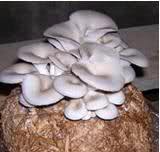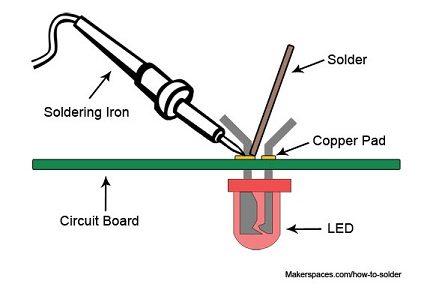 Oyster mushrooms (Pleurotus spp.) are normally grown either on softwood sawdust or on composted rice straw. The technology described in here uses three grasses: Flute reed (Phragmites karka), wild cane (Saccharum spontaneum L.) and tiger grass (Thysanolaena latifolia). All three grasses are abundant especially along the sides of roads.
Oyster mushrooms (Pleurotus spp.) are normally grown either on softwood sawdust or on composted rice straw. The technology described in here uses three grasses: Flute reed (Phragmites karka), wild cane (Saccharum spontaneum L.) and tiger grass (Thysanolaena latifolia). All three grasses are abundant especially along the sides of roads.
Making the Compost
The grass is cut and dried. The dry grass is then chopped into small pieces using a chopping machine. The chopped grass is moistened with water and thoroughly mixed with urea and lime, at a rate of 1 kg urea and 0.5 kg lime per 100 kg of dried grass. The grass is then piled up and covered with a plastic sheet. The top of the pile should be left uncovered for good ventilation. In addition, the pile should be turned three times every three days, and 0.2 kg. of magnesium sulfate (MgSO4.7H2O) is added at the second turning. The compost should be ready within ten days.
Composted grass should have a good smell and contain 65 – 70% moisture. A practical method of checking the moisture content is to squeeze the composted grass in your hand. If only a small amount of water leaks out between your fingers, the compost has the proper moisture content. Before bagging, about 6 kg of rice bran should be mixed thoroughly into the compost.
Bagging the Substrate
A kilogram of composted grass is put into a plastic bag measuring 18 x 35 cm (7 x 13 in) and pressed down tightly. A plastic ring is placed around the mouth of the bag and a clean piece of cotton is placed inside the mouth to give good ventilation. Filled bags are steamed at 100oC for three hours. They are allowed to cool, and are then inoculated with grain spawn of Pleurotus spp.. The bags are left to incubate at room temperature until the mycelia grow throughout the substrate.
Tending and Harvesting the Oyster Mushrooms
After the mycelia have developed throughout the substrate, take the cotton out of the mouth of the bag and transfer the bag to a growing house. Bags are stacked on an A-shaped-shelf. The house should be sprayed with water at least twice a day to maintain a relative humidity of not less than 85%. The fruiting bodies will appear within 3-5 days.
The bags will continue to produce mushrooms for 3 – 5 flushes over 2 – 3 months. After harvesting the last flush, the bags are removed from the house and emptied out. The growing house is cleaned, and the used substrate can be used as an organic fertilizer for tree crops.
For more information contact:
Ms. Nantinee Srijumpa
Chiangrai Horticultural Research Centre,
P.O. Box 39 Muang, Chiangrai 57000, Thailand
E-mail: srijumpa@yahoo.com, 2003-05-01
Source: FFTC for the Asian and Pacific Region.
Photo: formatkenya.org
Do you like this business idea? then please consider subscribing to our PINOY BISNES ![]() RSS feed. You can also subscribe by email and have new articles sent directly to your inbox. (Once you entered your e-mail address, you need to login to your e-mail account and click the link to confirm your subscription).
RSS feed. You can also subscribe by email and have new articles sent directly to your inbox. (Once you entered your e-mail address, you need to login to your e-mail account and click the link to confirm your subscription).




We Offer;
1. transfer of technology ( mushroom production, farm set-up)
2. seminar on mushroom growing (household)
3. mushroom productiom (consultancy )
We Sell;
fruiting bags at 20pesos for bulk order
planting spawn for only 45 pesos for bulk order
pls. contact : 09186141803/09368512497
do you have aplan of conducting seminar regarding this oyster mushroom cultivation ? how to regulate the temp? what is the required temp for this mushroom …. thanks….